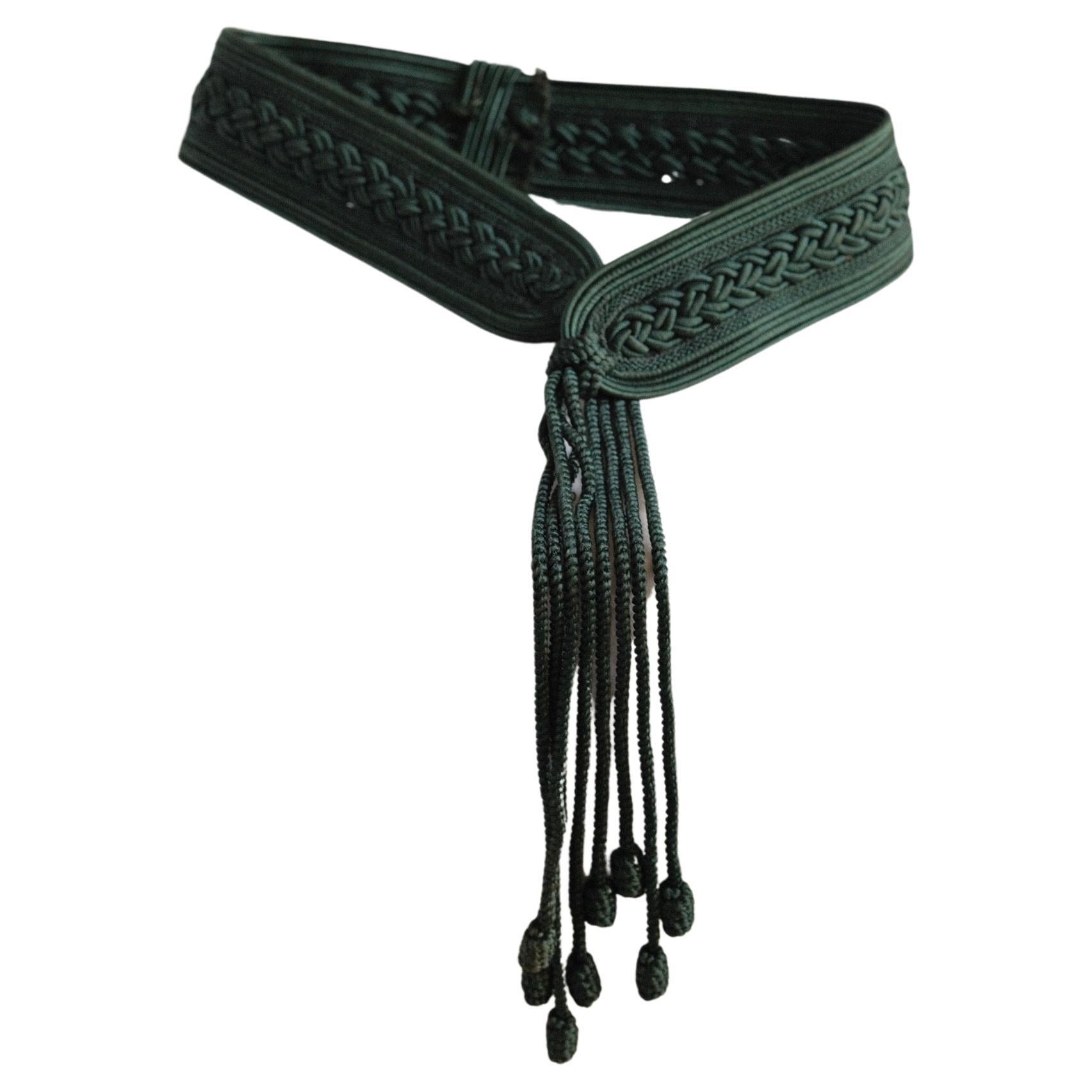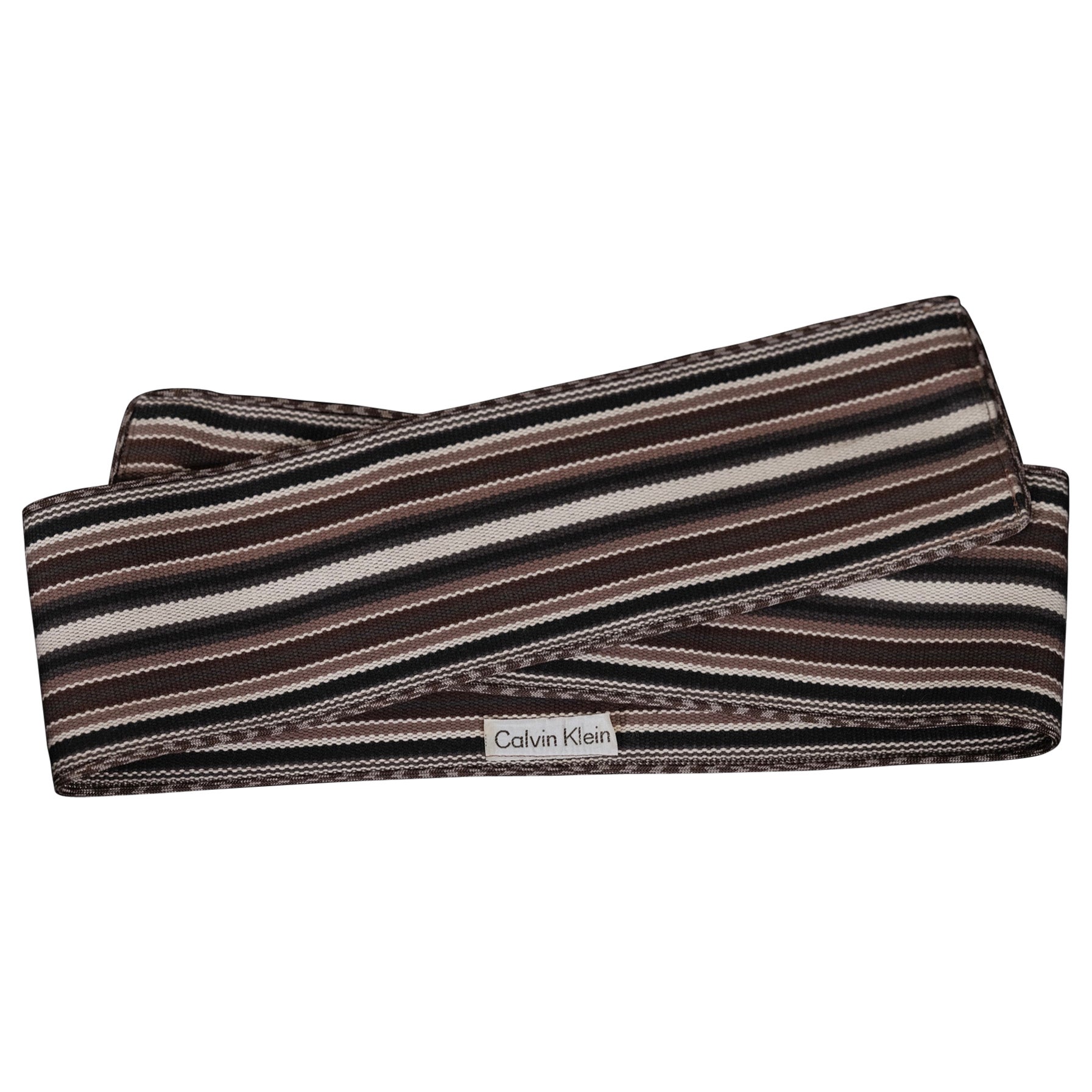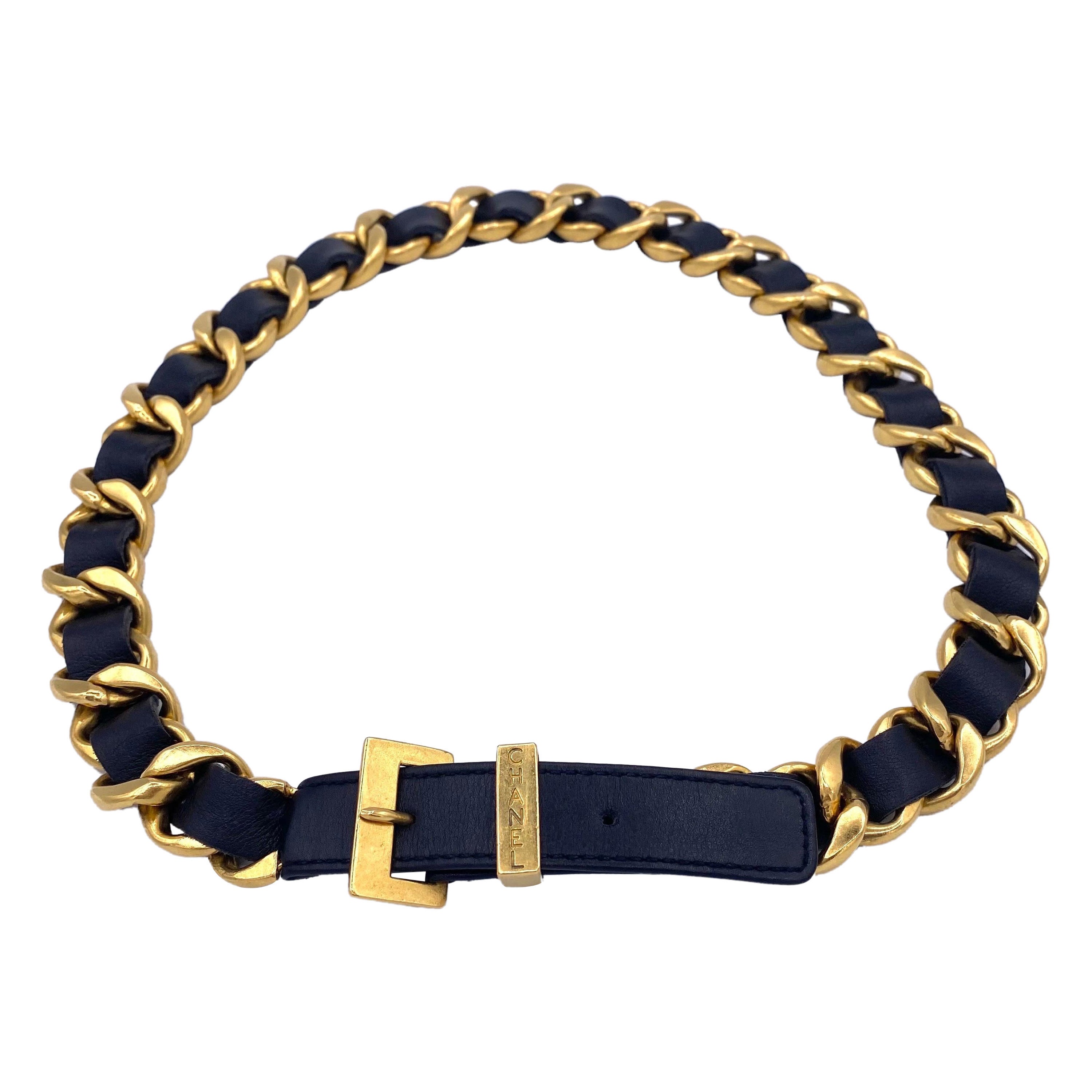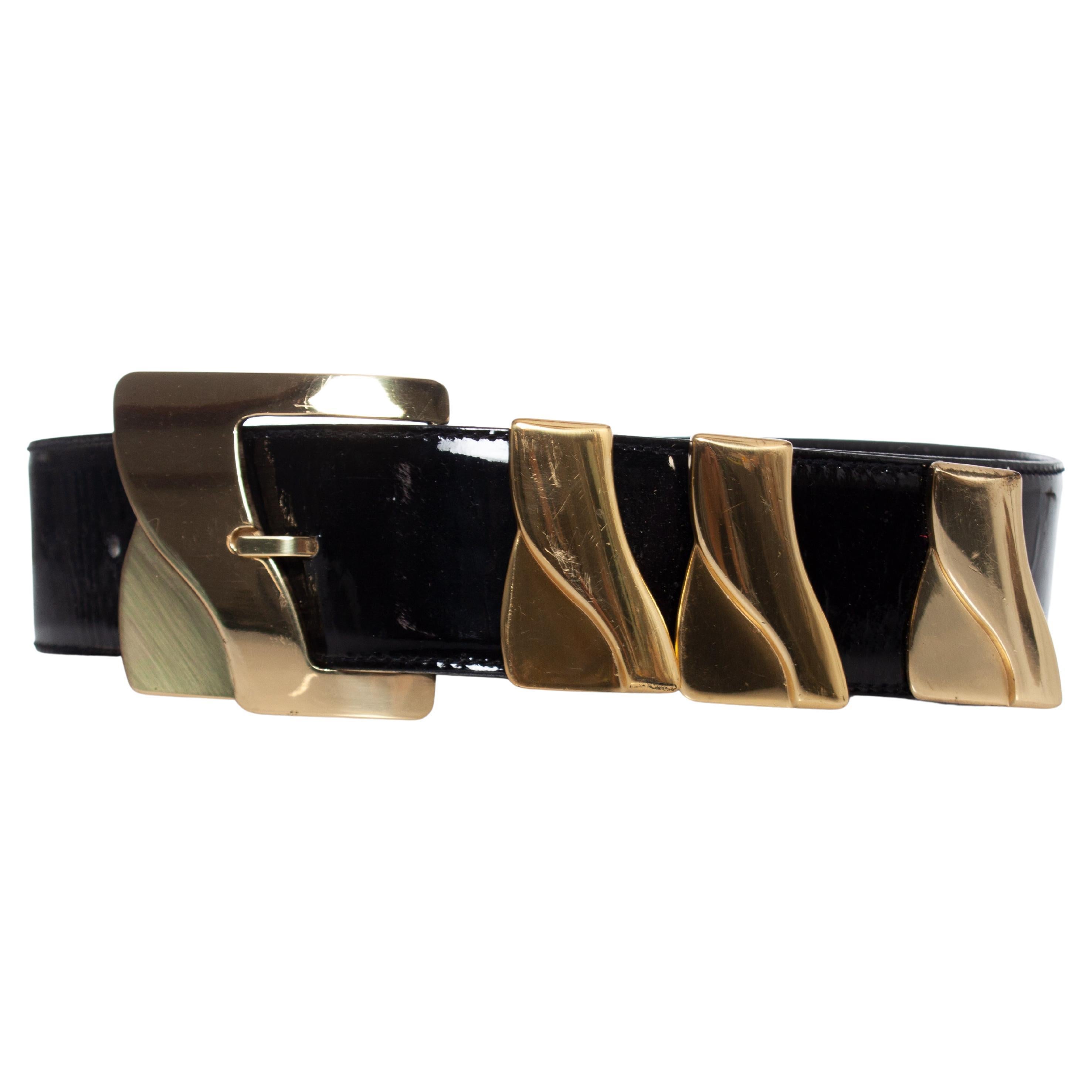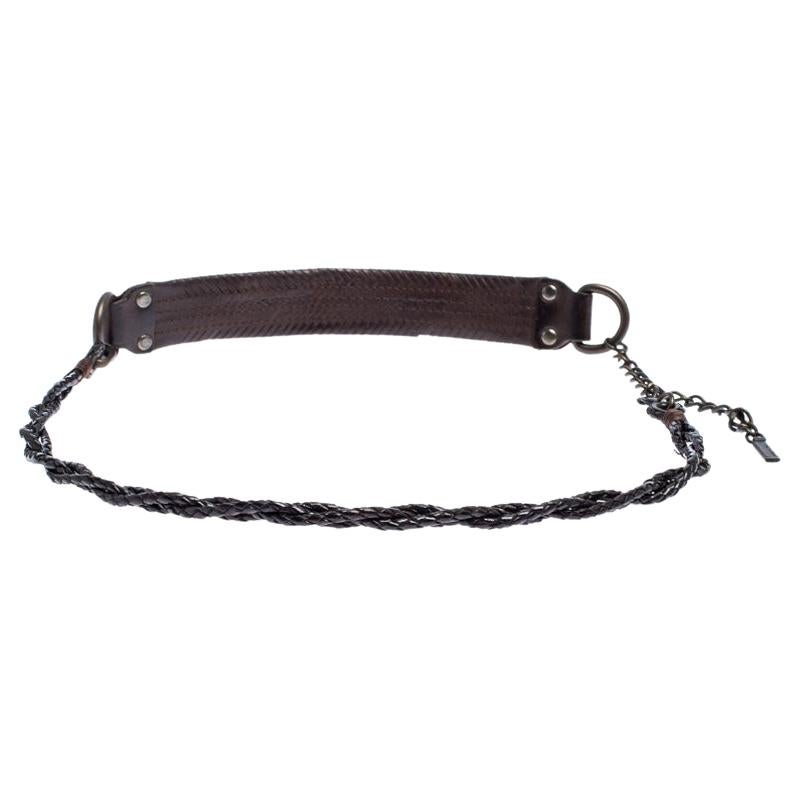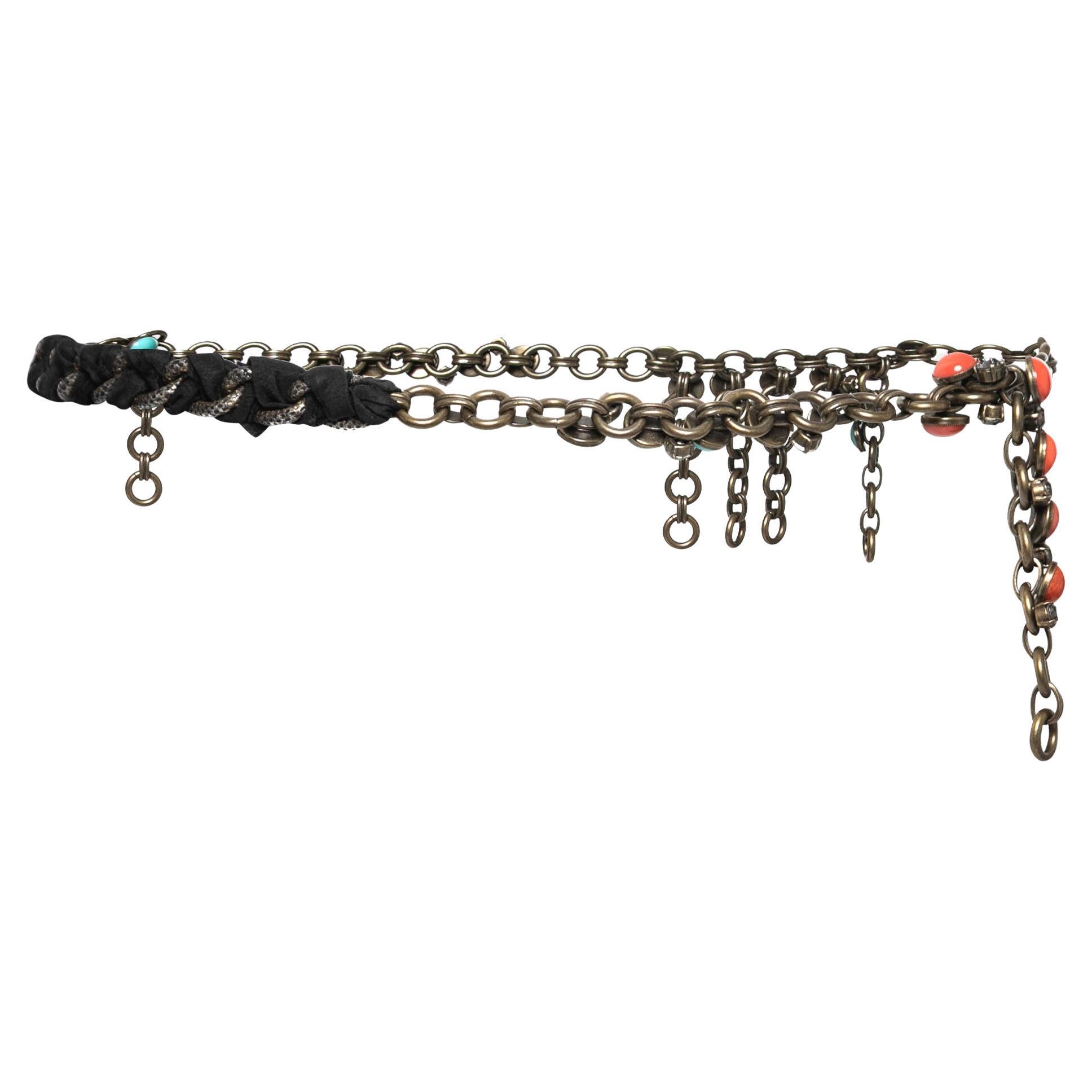Vintage Trifari Gold Chain Belt
About the Item
- Designer:
- Brand:
- Dimensions:Marked Size: one size fits most (US)
- Style:1960s (Of the Period)
- Place of Origin:
- Period:
- Condition:
- Seller Location:New York, NY
- Reference Number:1stDibs: LU3381220679902
Trifari
Costume jewelry maker Trifari is widely loved for its fine craftsmanship and complex designs for necklaces, brooches and other jewelry and accessories.
The company was formed in New York during the early 1920s, when its partners Gustavo Trifari (who descended from a family of jewelers), Leo Krussman and Carl Fishel (business associates in hair-ornament manufacturing) recognized, as other designers during the Art Deco era such as Gabrielle “Coco” Chanel had, that fashion trends for affordable jewelry for everyday wear represented an opportunity (and that the popularity of shorter hairstyles didn’t bode well for their haircomb business).
Initially called Trifari, Krussman and Fishel Jewelry (T.K.F.), the trio eventually shortened their brand’s name, at the suggestion of an advertising professional, to Trifari in order to evoke the romance of Gustavo’s native Italy.
The hiring of French designer Alfred Philippe as head designer in 1930 was pivotal to Trifari’s success. A master craftsman who had worked with both Cartier and Van Cleef & Arpels, Philippe set about establishing the same high-quality standards of materials and craftsmanship in the design of fashion jewelry and trained other Trifari artisans to do the same. Settings were delicate; crystals were hand set; designs, which sometimes featured dazzling floral motifs or exquisite depictions of marine life, were sophisticated and elegant, having both the look and feel of fine jewelry. First Lady Mamie Eisenhower wore a Trifari parure of faux pearls to her husband’s presidential inauguration in 1953 and Trifari glass pearls to his inaugural ball in 1957.
Before retiring in 1968, Philippe created Trifari’s most recognizable designs. In the 1930s, when the company was custom-making accessories for the stars of Broadway musicals, it was the crown motif: These brooches became so often identified with the brand that a crown was eventually incorporated into the trademark. In the 1940s, the “Jelly Bellies” inspired affection as well as knockoffs; these were animals, birds and insects sporting a “belly” of clear Lucite. Clip-Mates were another favorite and a technical marvel — two dress clips that, joined together, created a brooch.
Find a wide range of vintage Trifari jewelry on 1stDibs.
- ShippingRetrieving quote...Ships From: New York, NY
- Return PolicyThis item cannot be returned.
- Vintage Peggy Daven Black Eyelet SlidesLocated in New York, NYVintage Peggy Daven Black Eyelet Slides: These vintage mules were made by Peggy Daven in Spain of black eyelet over mesh, with leather details creating d...Category
1990s Spanish Shoes
- 1980s Donna Karan Wool DressBy Donna KaranLocated in New York, NYVintage 1980s Donna Karan Wool Dress: This is such an absolutely timeless vintage little black dress, made by Donna Karan in the late 1980s. The quali...Category
1980s Cocktail Dresses
- 1920s Navy Blue Silk Blouse or Evening JacketLocated in New York, NYVERY BREEZY presents: This vintage 1920s silk blouse is a little piece of flapper history, and a very rare find. The 1920s was a period of liberatio...Category
1920s Blouses
- 1960s JOSEPH MAGNIN TAFFETA WRAP DRESSBy Joseph Magnin Co.Located in New York, NYThis dress is so incredibly timeless and chic: exactly the kind of piece you want to invest in, that you'll never tire of wearing. Made by Joseph Magnin in the 1960s, it's made of lu...Category
1960s American Day Dresses
- 1980s Long Sleeve Floral JumpsuitLocated in New York, NYVERY BREEZY presents: I fell in love with this vintage jumpsuit, and putting it on actually made me even more obsessed. If you're not a jumpsuit person, hear me out: this one is so f...Category
1980s Jumpsuits
- 1950s Black Wool Square-Neck Wiggle Dress by Mr. MortLocated in New York, NYThis vintage little black wiggle dress is so timeless, and SO flattering! It was made in the late 1950s (or early 1960s) by New York label Mr. Mort, who was known for rbeing on the c...Category
1950s American Sheath Dresses
- Calvin Klein Spring 1979 Wrap Belt DocumentedBy Calvin KleinLocated in Los Angeles, CAVintage Calvin Klein Belt Spring 1979 Documented Double layer with piping Can be wrapped many ways One Size Excellent Condition Neutral color palette Feels like heavy canvas or Be...Category
1970s Unknown Belts
- Nina Ricci Passamenterie Belt with Tassels Dark Green 1990'sBy Nina RicciLocated in Los Angeles, CANina Ricci Passamenterie Belt with Tassels Deep green Four tassels at tie closure Braided detail Circa 1980's or 1990's Total Length: 52 inches Width: 2.25 inches Waist Size close...Category
Late 20th Century French Belts
- 1990s Vintage Chanel gold toned chain leather beltBy ChanelLocated in L'ESCALA, ESChanel belt in golden chain interlaced with black leather from the 90s. Stamped 93 A Made in France Adjustable buckle closure with 3 holes (69cm-71cm-73cm) Chain width 2.2cm delivere...Category
1990s French Belts
- Gianni versace, black patent leather waist beltBy Gianni Versace CoutureLocated in AMSTERDAM, NLGianni versace, black patent leather waist belt. The item is in good condition, hardware has light scratches and patent leather has wrinkles. (1991) • CONDITION: good condition • ...Category
1990s Belts
- Dolce & Gabbana Dark Brown Braided Leather Chain Belt 80CMBy Dolce & GabbanaLocated in Dubai, Al Qouz 2Statement accessories are always worth the buy and this belt from Dolce & Gabbana is one such creation that is sure to add oodles of style to your wardrobe! The dark brown belt...Category
2010s Italian Belts
- Lanvin Crystal Plastic Fabric Two Tone Gold Chain BeltLocated in Dubai, Al Qouz 2Add the luxury touch to your accessory collection with this belt. It comes made from quality materials and is designed with polished hardware. Grab it right away!Category
2010s Andorran Belts
